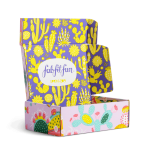In the competitive world of personal care products, first impressions matter more than ever. While we often focus on the quality of shampoos, lotions, and skincare items inside, the humble toiletries packaging box plays an equally crucial role in shaping consumer perceptions. These seemingly simple containers have evolved from mere protective shells into powerful brand ambassadors that communicate values, ensure product integrity, and create unforgettable unboxing experiences.
The modern toiletries packaging box serves multiple functions beyond basic protection. Today’s consumers expect packaging that preserves product freshness, prevents leakage during transit, and provides clear usage information. But the revolution goes much deeper – innovative materials like recycled cardboard, biodegradable plastics, and soy-based inks are transforming packaging from an environmental concern into a sustainability statement. Brands that prioritize eco-friendly packaging solutions aren’t just protecting their products; they’re protecting our planet while building consumer trust.
Design psychology plays a fascinating role in toiletries packaging. Colors, textures, and shapes trigger emotional responses that influence purchasing decisions. Luxury brands often employ minimalist designs with metallic accents and embossed logos to convey premium quality, while organic brands might use earthy tones and recycled textures to emphasize their natural credentials. The psychology extends to practical elements too – easy-open features appeal to older consumers, while child-resistant closures provide peace of mind for families.
Functionality remains paramount in packaging innovation. Smart designs now include built-in dispensers, travel-friendly sizes, and reusable containers that extend the product’s lifecycle. The rise of subscription services has further driven packaging evolution, with brands developing durable, aesthetically pleasing boxes that customers proudly display in their bathrooms month after month. This transforms temporary packaging into permanent brand touchpoints within the consumer’s personal space.
Technology integration represents the next frontier in toiletries packaging. QR codes connecting to tutorial videos, NFC chips for authenticity verification, and augmented reality experiences are becoming increasingly common. These technological enhancements bridge the physical and digital worlds, providing added value while combating counterfeiting – a significant concern in the beauty industry where product safety is non-negotiable.
The unboxing experience has emerged as a critical marketing opportunity in the age of social media. Brands now design packaging specifically for shareability, creating Instagram-worthy moments that generate organic publicity. From tissue paper with branded patterns to personalized messages hidden inside boxes, these thoughtful details transform routine purchases into memorable events that customers eagerly share with their networks.
Regulatory compliance and safety standards continue to shape packaging development. Child-resistant closures for certain products, tamper-evident features, and clear ingredient listings aren’t just legal requirements – they’re essential consumer protections that build brand credibility. Meanwhile, international shipping considerations demand packaging that withstands varying climate conditions without compromising product quality.
Looking ahead, the future of toiletries packaging boxes points toward hyper-personalization and smart technology. Imagine packaging that changes color when products near expiration, or boxes that replenish themselves automatically when supplies run low. As sustainability concerns grow, we’ll likely see more water-soluble packaging, mushroom-based materials, and truly circular systems where packaging returns to manufacturers for reuse.
The transformation of toiletries packaging from functional necessity to strategic asset demonstrates how even the most mundane elements can become competitive advantages. In an increasingly crowded marketplace, the box surrounding your product isn’t just a container – it’s the first physical touchpoint, a sustainability statement, a user experience, and a silent salesperson all rolled into one. Brands that recognize this potential are already reaping the rewards through increased customer loyalty, social media engagement, and market differentiation.




Leave a Message